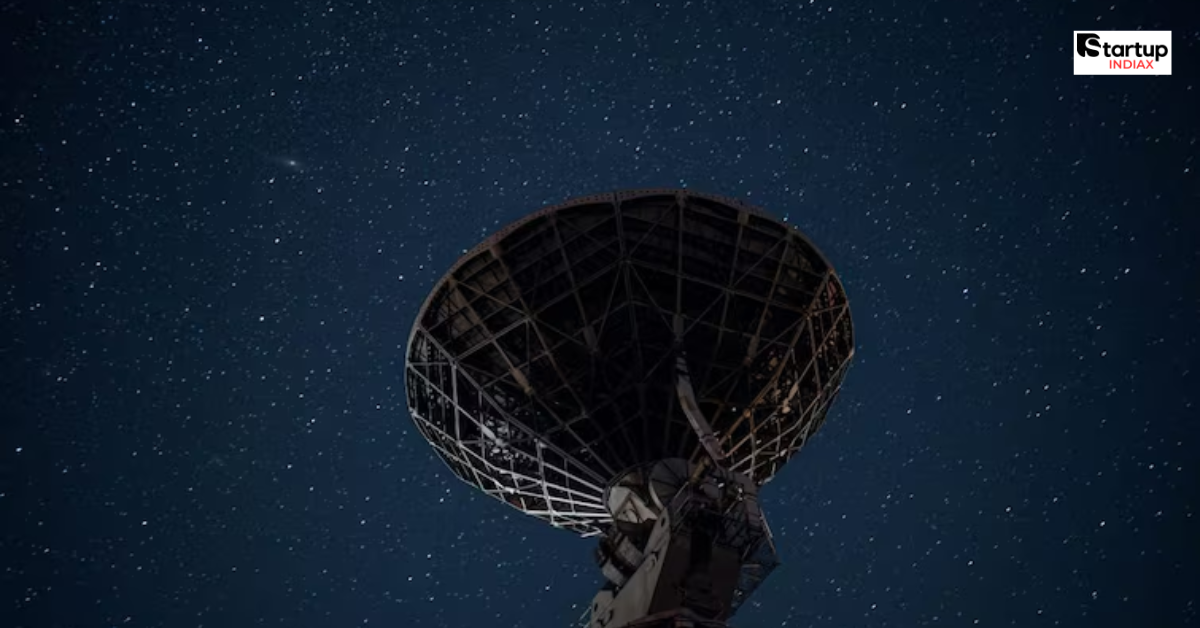Starlink in India is poised to deliver high-speed satellite internet, but a cap of 20 lakh users, as announced by Union Minister Pemmasani Chandra Sekhar, limits its reach. This article dives into why Starlink faces this restriction, how it compares to telecom giants, and its potential to transform rural connectivity. With expert insights and data-backed analysis, Startup INDIAX explores the opportunities and challenges of Starlink’s entry into India’s satcom market. Learn how this impacts startups, rural communities, and the future of digital India.
Table of Contents
What Is Starlink and Why Is It Targeting India?
Starlink, a venture by Elon Musk’s SpaceX, is a satellite internet provider using a constellation of low Earth orbit (LEO) satellites to deliver high-speed, low-latency internet globally. Unlike traditional broadband that relies on cables or cell towers, Starlink beams internet directly from space, making it ideal for remote and underserved areas. In India, where over 800 million people use mobile broadband (TRAI, 2025), Starlink aims to address the connectivity gap in rural and remote regions.
India’s telecom market is dominated by Reliance Jio, Bharti Airtel, and BSNL, yet 50% of the population lacks reliable internet access, particularly in rural areas. Starlink’s entry, approved by the Indian National Space Promotion and Authorisation Centre (IN-SPACe) in July 2025, targets these underserved regions. But why is its rollout limited to just 20 lakh users?
How Does Starlink’s Satellite Internet Technology Work?
Starlink operates a network of over 4,400 LEO satellites orbiting at 540–570 km, providing internet speeds up to 200 Mbps in India. Users need a Starlink kit—a satellite dish and modem—to connect. This setup bypasses traditional infrastructure, offering a lifeline for areas with poor connectivity. As Startup INDIAX has noted, satellite internet is gaining traction among Indian startups in sectors like agritech, education, and IoT, where reliable connectivity is critical.
Why Is Starlink Limited to 20 Lakh Users in India?
On July 28, 2025, Union Minister of State for Communications Pemmasani Chandra Sekhar announced that Starlink in India will be capped at 20 lakh users due to spectrum capacity constraints. This limit, representing just 0.25% of India’s 800 million mobile broadband users, positions Starlink as a niche player. “Starlink can have only 20 lakh customers in India and offer up to 200 Mbps speed. That won’t affect telecom services,” Pemmasani said, addressing concerns about competition with BSNL and others.
What Are the Spectrum Capacity Constraints?
Starlink’s 600 Gbps throughput over India restricts its ability to serve more users without compromising service quality. The Telecom Regulatory Authority of India (TRAI) has opted for administrative spectrum allocation for non-geostationary orbit (NGSO) providers like Starlink, with a five-year tenure extendable by two years. Providers also face a 4% adjusted gross revenue charge and a ₹500 annual subscriber fee in urban areas, shaping Starlink’s market strategy.
How Does This Cap Impact Telecom Giants Like BSNL?
The 20 lakh user cap ensures Starlink in India won’t disrupt established players like BSNL, Jio, or Airtel. BSNL, which completed its 4G rollout in 2025, remains a key player in rural areas. Pemmasani emphasized BSNL’s affordability, with no tariff hikes planned, making it a strong competitor. Telecom analyst Dr. Rakesh Kumar told Startup INDIAX, “Starlink’s limited scale and premium pricing make it a complementary service, not a threat to India’s telecom giants.”
What Speeds and Costs Should Indian Users Expect?
Starlink offers speeds up to 200 Mbps, far surpassing rural BSNL’s 10–50 Mbps 4G speeds. However, the service comes at a premium: the Starlink kit costs ₹39,000–₹43,000, with monthly tariffs around ₹3,000, compared to Jio’s ₹500–₹1,500 plans. This positions Starlink for businesses, schools, and affluent rural users rather than mass-market consumers.
Is Starlink’s Pricing Affordable for Rural India?
With rural incomes averaging ₹8,000–₹15,000 monthly, Starlink’s ₹3,000 tariff is a hurdle. Yet, its value lies in serving enterprises and institutions. For example, a rural school in Uttarakhand could use Starlink for e-learning, bypassing unreliable local networks. Priya Sharma, an agritech startup founder, told Startup INDIAX, “Starlink’s costs are high, but for startups in remote areas, reliable internet could unlock new opportunities.”
How Will Starlink Transform India’s Rural Connectivity?
With 50% of India’s 1.4 billion population lacking consistent broadband, Starlink’s satellite internet could revolutionize rural areas. Applications include telemedicine, where rural clinics connect to urban specialists, and IoT-driven farming, optimizing crop yields. The 20 lakh user cap, however, limits its immediate impact.
Can Starlink Bridge India’s Digital Divide?
India’s digital divide is stark: only 31% of rural households have internet access compared to 67% in urban areas (NSO, 2023). Starlink’s infrastructure-free model is promising, but its cap and costs hinder scalability. “Starlink is a step toward connectivity, but affordability and wider spectrum allocation are critical,” says telecom expert Ankit Jain.
What’s Next for Starlink in India’s Satcom Market?
Starlink faces competition from Reliance Jio SES, Eutelsat OneWeb, and Amazon’s Project Kuiper, all vying for India’s satcom market. Jio and OneWeb already hold GMPCS licenses, while Starlink is building ground infrastructure and seeking DoT approvals for equipment imports. Commercial services are expected by late 2025, with TRAI’s regulatory framework ensuring data privacy and compliance.
Who Are Starlink’s Key Competitors in India?
Reliance Jio SES and OneWeb are major players, leveraging local expertise and infrastructure. Amazon’s Project Kuiper is also entering the fray, targeting similar rural markets. “The satcom market is heating up, but Starlink’s global experience gives it an edge,” says industry analyst Neha Gupta.
Conclusion: Is Starlink the Key to India’s Internet Future?
Starlink in India offers a glimpse of a connected future, but its 20 lakh user cap and high costs limit its reach. For entrepreneurs and startups, Starlink’s high-speed internet could unlock innovation in rural areas, from agritech to education. Startup INDIAX invites you to share your thoughts: Can Starlink transform India’s digital landscape? Comment below or explore more startup stories on our platform!

